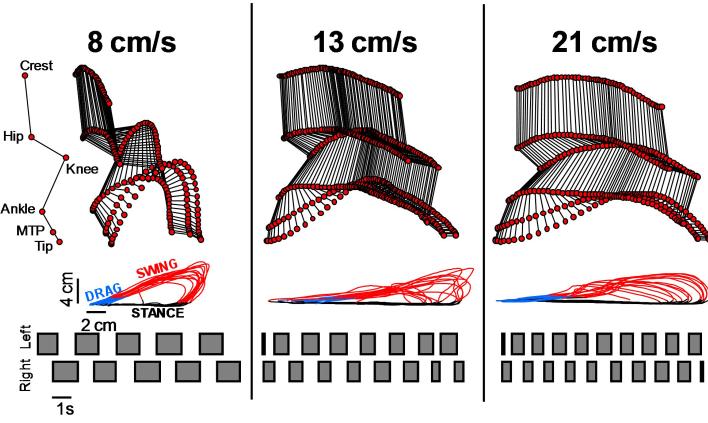Figure 5.
Modulation of the kinematic features with changes in treadmill belt speed in a complete spinal rat walking bipedally under epidural stimulation and quipazine administration. The stick decompositions of the hindlimb movements during the swing phase of gait as well as successive (n = 10 steps) trajectories of the hindlimb endpoint during both the stance and swing phase of gait show the progressive adaptation of hindlimb kinematics with increasing treadmill belt speed. Likewise, increasing the treadmill belt speed resulted in a decrease in stance duration and increase in step length while interlimb coordination remains preserved. The boxes at the bottom of the Figure indicate the period of stance.

